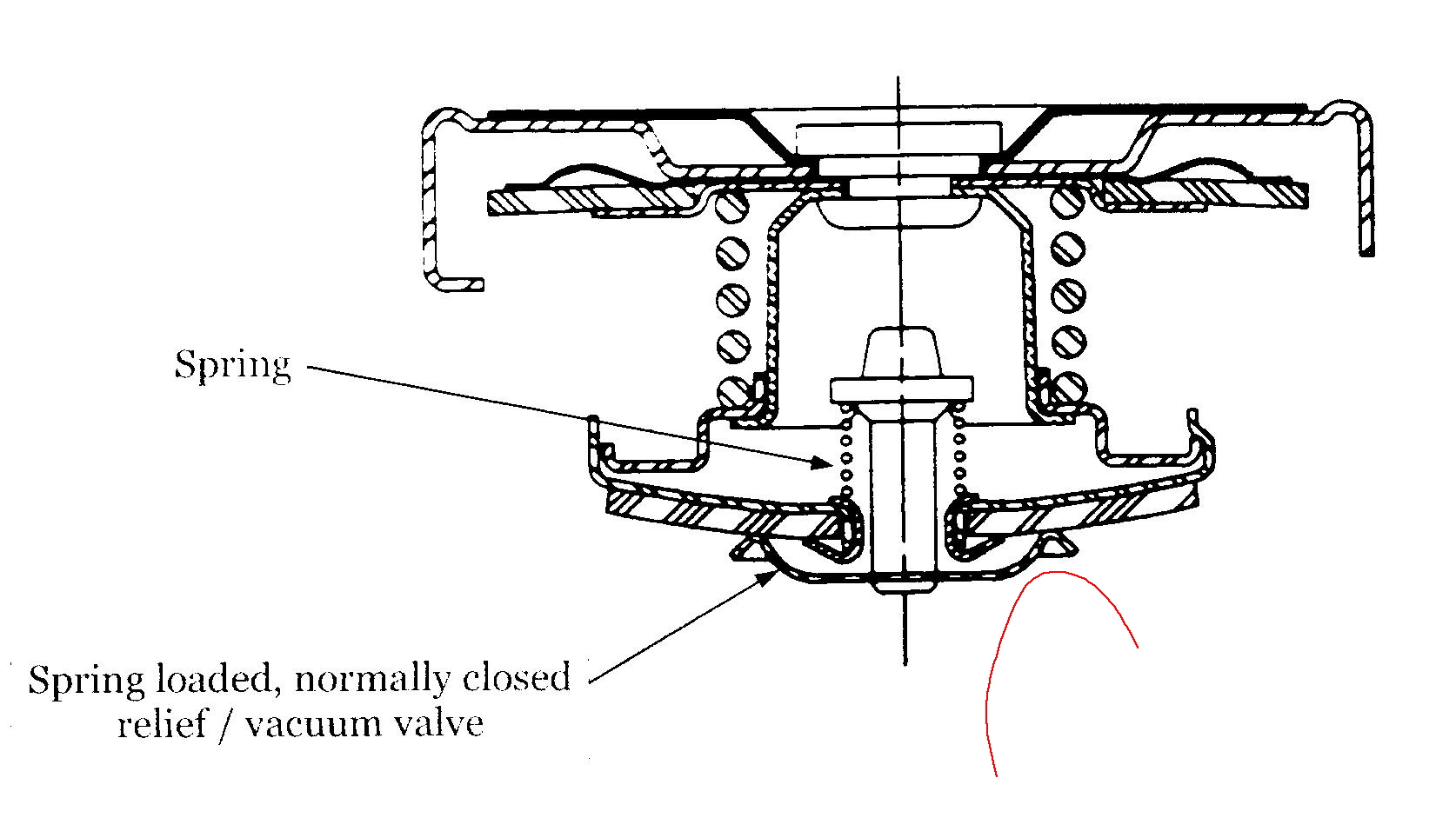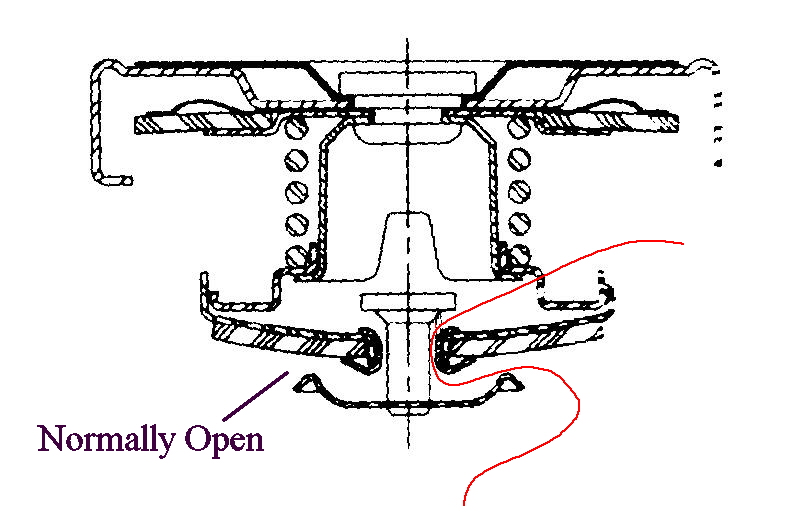 |
| E-Type header tank caps are ALWAYS non-vented. This doesn't mean what you might expect. Let's take a look at what a cap looks like in cross section: |
 |
| Notice that the poppet at the bottom is spring loaded, and thus normally closed. The cap will not allow air or coolant to expand out of the radiator until the design pressure is met (7 or 13 lbs, depending on model), at which point you may have an overheating condition. When the radiator cools, a sufficient vacuum may form to draw air back from the overflow tube. But eventually, an "air cushion" forms in the header tank. This air simply compresses against the cap when the system is hot, and expands again when cool. This type of cap is NOT suitable for a recovery system, because it's designed to allow trapped air to remain in the system. Now let's look at a vented cap: |
 |
| Looks similar, but there's one small difference. The poppet isn't spring loaded, so it's normally open. As coolant begins to heat up, the open poppet allows air and coolant to flow into an unpressurized recovery tank. Once the system is hot, the poppet is forced closed by system pressure. In the recovery tank, air and coolant separate, so that when the system cools and pressure drops, only coolant is drawn back. If pressure rises above the design pressure (usually 13lbs), then the entire stopper is lifted by pressure to allow the system to depressurize. This is the only type of cap which should be used with a recovery tank. |
Copyright © CoolCat Express Corp.